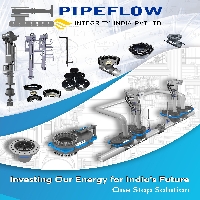
PIPELINE AND PIPING MODIFICATION
Making new connections to equipment while it remains in service and under pressure, is the end goal of any hot tapping enterprise; in the case of pipelines and piping, it is primarily used to tie in other pipeline systems. Existing, operational loaded facilities (usually tanks, piping, pipelines or water lines) undergo hot tapping to efficiently achieve several important goals. Remedial work without shutdowns, disruption of service, product loss, emission negation, and added risk to workers is achieved with this ingenious technique. Sometimes referred to as pressure tapping, wet tapping, or line tapping, the process involves an experienced crew, specialized equipment, and meticulously detailed analysis.
Hot tapping as an industry term originates from two distinct aspects of the procedure; hot work and precise drilling (tapping). Hot work encompasses heat generating or spark-producing equipment – welding, portable grinders, burning torches, abrasive blasting, etc. – which may be employed in a given “hot” procedure while tapping refers to the use of a hot tapping machine, which removes and recovers a curved cut out (coupon) of the pipe wall. Line stopping allows for greater degrees of modification and remedial work and uses different machinery to achieve this. This technique makes use of line stop machines, plugging heads, and a bypass line to maintain the complete operation of the loaded facilities while repair activities and further operations fully commence.
Though hot tapping is versatile in its application to pressure vessels and storage tanks, the ability to engage in modification and remedial work without interrupting services makes it an indispensable skill in dozens, perhaps hundreds, of industries. Hot tapping can be applied to a broad spectrum of materials, including carbon steel, cement, and PVC – on land or underwater. Whether carrying crude oil, gasoline, water, natural gas, or sewage, commodity transportation and pressure remain unchanged, no matter how extensive modifications or repairs are. Broadly speaking, modification, could be defined as any planned and executed addition to an existing facility, though a distinction is worth noting for remedial work, or repairs (addressed later in detail), which technically could fall within such a general definition. The list of various modifications performed in the near-century through hot tapping exercises is lengthy, but there are several crucial, commonly performed modifications worth taking note of.
Tie in connections are among the most referenced concerning hot tapping, with sound reason. These common connections are essential to expanding existing infrastructure and utility of piping or pipeline – among the more routine modifications are extensions, bypass lines, main relocations, or even pig launcher and receiver stations. Perhaps less frequently, yet regularly installed modifications include: sample points, air relief points, pressure control switches, sensor installations, lateral lines, metering devices, sales taps, and much more can be added to existing facilities by way of hot tapping. As a versatile method for enacting timely modifications (or repairs), routine or rarified, “hot” connections have proven to be an invaluable service in industry toolkits around the world.
HOT TAPPING: PREPARATION, RISK, AND RISK MITIGATION
Historical cold tee (shutdown interconnect) methods for creating pipeline connections or remedial work are still used, though often at the cost of disruption of service for days, increased emissions (particularly in the Natural Gas industry), millions of dollars in expense, and arguably more risk*. The decision to choose between a hot tap or a shutdown interconnect, hinges upon a comparative analysis of pros and cons. Potential installation difficulties and long term operating issues, against the beneficial economic, environmental, and operating impacts of either route. Though the comfort and familiarity of cold connections may hold some appeal, the regular use of hot connections has steadily increased. Largely due to ninety years of continuous refinement to standards, techniques, and regulations, risks associated with hot tapping have been mitigated to a significant degree. These advances have so significantly reduced hot connection risks that it is commonly deemed superior to the available alternatives.
Despite the “hot” nature of hot tapping and risks inherent in pressurized operational tanks, piping, and pipelines, it remains a thoroughly planned, calculated, and controlled procedure; exceptional investments in preparation, design, and proper installation are paramount in mitigating risk while completing a project.
Before commencing a hot tap, job-specific plans are written out in generous detail, and include a host of specifications which are intimately related to the procedure, at a minimum they include:
Connection Location and Design (including gaskets, valves, and bolts)
Thickness and Materials of the Vessel, Piping, or Pipeline to be tapped
Detailed, Written Welding Procedures
Health, Safety, Fire Protection, Emergency Response, Procedures and Instructions
Owner and User Requirements
Emergency Shut Off Procedures
Contingency Seal Off and Isolation Plans (that maintain integrity for the system’s life)
When preparing for a hot tapping procedure, every minute detail must be rigorously accounted for, to ensure safe and effective operation. The highly trained and experienced crews that carry out hot connections address metallurgical concerns related to each operation, specifically as it pertains to welding. The wall thickness of these vessels can be measured with ultrasonic gauges, to properly marry welding techniques, temperature, and pressure concerns, to avoid a potential loss of containment near weld pools. Calculations are made regarding heat transfer. flow speed, and other variables to reduce any risk (of burn-through, hydrogen cracking, etc.) when welding branch connections onto pipe systems.
BRANCH CONNECTIONS, HIGH PRESSURE, AND LOW-PRESSURE FITTINGS
Aside from valves and hot tapping machines, fittings are one of the primary components of any hot tapping exercise; as the name suggests, they are designed with tremendous variety to make branch connections – a fit for every occasion. Dimensions such as the size and pressure of a vessel, as well as the bore size of the tap itself, are fundamental to determining the type of fitting. Expertly qualified personnel select a sized fitting to accommodate the operating pipeline. Once the appropriate fitting is selected, it is welded with incredible nuance and attention to detail, although mechanically attached fittings are rated as an alternative in instances where welds are not feasible.



Contact Number: 8487055992
Email: business@pipeflowintegrity.com
Thaltej, Ahmedabad, Gujarat, India
Ranchi, Jharkhand, India
ahmedabad
UP, India
Jharkhand, India
Bangalore, Karnataka, India
LOCATION
Ahmedabad, Gujarat, India
EMPLOYEE
1-10 Employees
*******@pipeflowintegrity.com
SOCIAL MEDIA